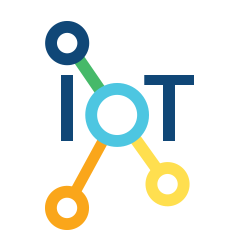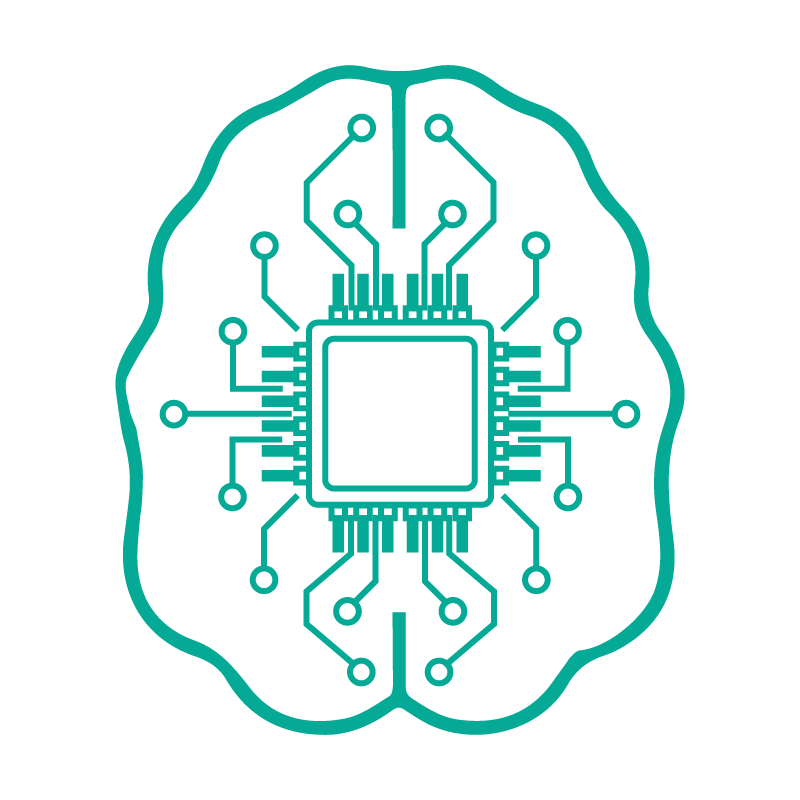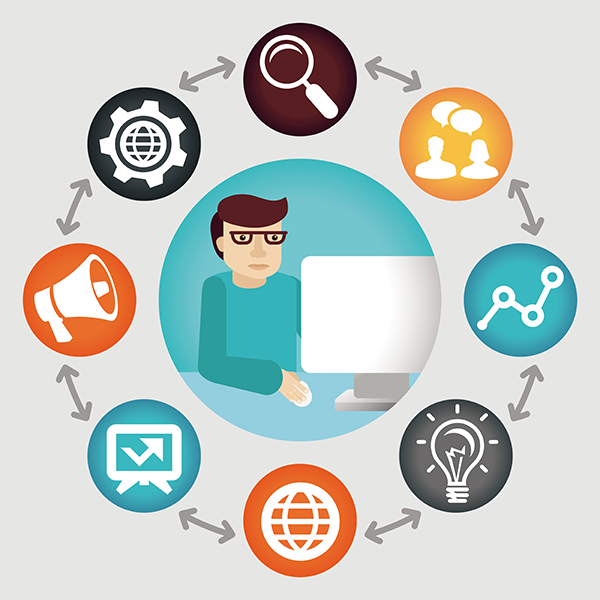Who We Are
Working with both agile and lean methodologies we deliver app solutions within time frames of several weeks. We can provide everything from MVPs to full working interfaces for IOS (iPhone, iPad, Apple watch and iPod Touch), Android, Web and full backend stacks.
With over 2 years experience, nearly 40 mobile apps, 30s of mobile and responsive websites and around 10 full stack backend systems running in the cloud we can make a real difference to you; either in addition to an existing team or as your sole technical provider.
Our model always includes working in person from your offices to define the consumer experience (UI/UX) through to full delivery and testing in our development studio. we have the ability to deliver world class work at competitive costs from our different world locations.
Here are some of our expertise
Android Application Design & Development
We are experts in Android mobile application development. Our small and focused team of in-house Android developers have the experience and the knowledge to bring your app idea to life. Our dedicated Android engineers will work with you from concept to design and development along with our testers and project managers.
IOS Application Design & Development
At STAMASOFT we build world class custom iOS mobile applications for startup and enterprise clients from scratch. Our in-house iOS developers are experts in iOS app development and are fluent in both Objective-C and Swift languages. All of our iOS development and design work is done in-house by our iOS engineers and none of our work is outsourced. We take pride in our code.
Internet Of Things
Our systems integrators are flexible in working with legacy systems and integrating them with end-to-end solutions. Their vast knowledge of the IoT landscape and top players in the market empowers their decision-making process and produces a superior end result of a custom IoT project.
Our IoT engineering firm boosts the abilities of global brands and entrepreneurs to succeed by developing the right IoT solutions. Our experienced engineers accelerate your product’s go-to-market delivery or solve your specific problems. Vates’ experience with IoT ranges from developing commercial IoT solutions to Industrial IoT (IIoT) products.
Artificial Intelligence & Machine Learning
STAMASOFT is democratizing Artificial Intelligence & machine learning for businesses by enabling them to access whatever models are best suited for their needs from whichever platform they chose to use, whether it’s just a single pre-trained model or all of them at the same time.
Blockchain Technology
STAMASOFT is working on blockchain technology to provide end-to-end blockchain development and blockchain consulting services to multiple business domains. We are researching on customized solutions in every facet of the blockchain technology like smart contracts, dApps, STO/IEO launches, stablecoins, public and private blockchain, for their clients.
Research & Developement (RND)
STAMASOFT has several enrich R&D Teams working on different aspects. We have R&D team working on Android Developement, IOT, Blockchain, Artificial Intelligence, Machine Learning, Data Mining etc.
Project Management & Testing
Our project managers will lead you through the whole product lifecycle and input on your product ideas.
Our testers will provide full scripted testing, automated testing and UAT testing as desired.
Get in Touch!
Read Blog

The surprisingly boring road to self-driving cars
At last, it is here! The truly self-driving car, no human behind the wheel! For the public! …A few hundred of them, in a closed beta, in a small corner of sun-drenched (never snow-drenched, almost never water-drenched) suburban Phoenix, five years later than some people were predicting six years ago. Few new technologies have ever been more anticipated and more predicted than the self-driving car. Anyone who drives cannot help but imagine not having to drive any more. It has been said that they will change our cities, our homes, our commerce, even our fundamental way of life. But at the same time, the actual progress has seemed … well … glacial, to the casual driver’s eye. We’re mostly talking about software, after all. OK, and LIDAR, and cameras, but the software is the key. People couldn’t help but expect a roll-out like that of smartphones, where the launch of the iPhone in 2007 led to adoption by every tech-savvy person by 2010, and the vast majority of the developed world by 2013. People couldn’t help but expect a mass market push. In 2014, the optimistic attitude was, maybe your next car is electric; then your next one — or even that same one, courtesy of an OTA software update — will be self-driving! Set the controls for the heart of Los Angeles, or Boston, or both, and lie back and snooze, baby. That’s not how it’s going to happen. Waymo’s closed beta is a huge yep, yes, but it is also a tiny incremental iteration. We aren’t going to see a Big Bang moment, when suddenly you buy your next car and it will carry you unaided from Vancouver to Halifax, or even Vancouver to Whistler. Instead we’re going to see a series of tiny steps forward, measured over years, frequently in industrial or commercial settings rather than personal ones. First they drive the broad, sunny streets of Phoenix; then highways; then in more complex situations, such as airports and downtowns; then in heavy rain; then amid detours and road closures; then in rough, winding country roads prone to landslides and flooding; then (some considerable time from now, says your Canadian correspondent) in snow and ice… And even then, how can a truly self-driving car handle anomalous situations, when the car doesn’t know what to do and screeches to a halt? Even more importantly, how will it know it’s in an anomalous situation and it doesn’t know what to do? Will cars be drivable remotely, in such cases? If so, how will we secure that process? What about adversarial attempts to manipulate the neural networks behind the figurative wheel, by feeding them misleading inputs that they respond to but the naked human eye might not notice? I suppose we have to talk about the so-called “trolley problem,” too. I’d rather not. It is by far the silliest and most overanalyzed question about self-driving, since in 99.9% of problematic situations the solution is simply “stop.” Anything like the trolley problem will only come up in the edgiest of edge cases — but, if only to satisfy the public, those cases will have to be publicly hashed out as well. The larger issue brought up by the “trolley problem problem” is that we have no collective social understanding of how to judge the risks posed by self-driving cars, and what risks we should accept. On paper, if all of America moved to self-driving cars overnight and they started killing 100 people every single day … America should rejoice, because the death rate from car crashes will have fallen! In practice, however, he understated, it seems likely that America, or at least American media, will not rejoice. Rather the opposite. When you step into a self-driving vehicle, you will be taking a risk, just as you do whenever you step into a human-driven vehicle. But it will be harder to measure this new risk, and even if/when we can, we won’t weigh it the same way that we do the old risk. Such is human nature. Liability alone will be a giant can of worms. We have an entire infrastructure of regulation built around the old risk. It will change only slowly to manage this new risk, and it will have great difficulty sloughing off old preconceptions which no longer apply. Dream of cars with no steering wheels all you like, for example, but my guess is that in many jurisdictions, self-driving cars will have to include a legal driver among their passengers at all times. When you consider the combination of the technological challenges, the social challenges, and the regulatory challenges, all of which are seriously nontrivial — it seems apparent that we are going to creep, rather than bound, into the self-driving future. And so: self-driving vehicles will slowly, quietly, take over closed industrial / commercial settings. Waymo’s self-driving taxis, followed (apparently at some distance) by others, will very gradually expand their beachhead from Phoenix, bit by bit and clime by clime, with occasional setbacks. Personal cars will continue to increase their self-driving capabilities one situation at a time: parallel parking, stop-and-go highway traffic, parking garages, certain patches of quiet suburban territory. This means there will almost certainly be no point at which you suddenly have a self-driving car. Self-driving isn’t a product, an event, or a feature; it’s an aspirational limit to which we will asymptotically approach. We’re collectively already on that curve — which is exciting! — but it seems apparent that its climb will be much more gradual than almost everyone, including me, thought not so long ago.

Twitter’s political ads ban is a distraction from the real problem with platforms
Sometimes it feels as if Internet platforms are turning everything upside down, from politics to publishing, culture to commerce, and of course swapping truth for lies. This week’s bizarro reversal was the vista of Twitter CEO Jack Dorsey, a tech CEO famed for being entirely behind the moral curve of understanding what his product is platforming (i.e. nazis), providing an impromptu ‘tweet storm’ in political speech ethics. Actually he was schooling Facebook’s Mark Zuckerberg — another techbro renowned for his special disconnect with the real world, despite running a massive free propaganda empire with vast power to influence other people’s lives — in taking a stand for the good of democracy and society..

How data science could save 6 million lives from preventable death by 2030
An initiative that will use digital technologies such as artificial intelligence has been launched to empower community health workers, promising to help save the lives of at least six million children and women in ten countries by 2030. The Rockefeller Foundation initiative will be piloted in Uganda and India for its first phase that runs from this year to 2022. It will be expanded to eight other countries by 2030 in regions with a high need or high incidence of maternal mortality and which can sustain the use of digital tools such as mobile phones and the internet. *Following the Ugandan pilot in Africa, the initiative launched last month (25 September) will potentially expand across countries in East and Southern Africa. The Precision Public Health project, backed by US$100 million funding from the Rockefeller Foundation and partners, to prevent and treat diseases aims to use data for creating effective interventions to address the health needs of populations, especially mothers. For instance, linking pregnant women to health workers and bringing health facilities closer to where people reside to increase the number of people delivering in hospitals or assisted by a doctor or nurse. Manisha Bhinge, associate director of the Rockefeller Foundation’s Health Initiative, says: “Our biggest aim is to end mortality due to preventable diseases such as *malaria, diarrhea, pneumonia in young children, infections disease outbreaks and ensure access to critical primary healthcare services. We know that community-based interventions are critical.” Bhinge tells SciDev.Net that empowering communities to easily access services is vital to ensuring accessible, affordable and high quality healthcare. “We want to ensure that community workers bring the right information to the right people at the right time,” explains Bhinge. Interventions such as early detection of possible disease outbreaks, she adds, will ensure that key health crises such as cholera outbreaks are mitigated before they outstrip available resources as was the case with the Ebola virus in the Democratic Republic of Congo. The Rockefeller Foundation will partner with organizations such as the WHO, UNICEF, and governments to deliver the project. It comes as a WHO report published last month shows that in 2017 about 295,000 women died from pregnancy and childbirth, with 94 per cent of the deaths occurring in low-resource regions. According to the Rockefeller Foundation, developing countries are largely missing out in data science and this could widen inequalities in health outcomes relative to developed nations. But under the initiative, data analytics will be used to predict problems such as where there are sanitation issues that could lead to cholera and diarrhea. “We shall therefore navigate, and get tools in place to respond in time,” Bhinge says. Jane Aceng, Uganda’s minister of health, tells SciDev.Net that leveraging data at community levels will help improve healthcare delivery in the country. “Data can help us see who is in greatest need and hold ourselves accountable for meeting those needs,” explains Aceng. “We are looking forward to working with global partners, engaging technology companies, and translating innovations into lives saved and improved.” Freddie Ssengooba, an associate professor of health economics and health systems management at the Makerere University in Uganda, cautions partners implementing the initiative to focus more on people rather than health systems. “Health systems are important but can make an impact [only] if it brings health interventions to the people,” Ssengooba says, adding that data must be sent “back to the society where action is needed to offer working solutions to health challenges facing people” This article was originally published on SciDev.Net.

Facebook wanted to buy Fitbit too, but Google offered more cash
Google buying Fitbit was the big news of the day, but in an alternate universe, it might have been another tech behemoth making. According to a report by The Information, Facebook courted Fitbit too, but Google was willing to pay double. For reference, Google ended up closing the deal for about $2.1 billion. Facebook doesn’t have a huge hardware presence, with its best-known physical products being its Oculus VR headsets and its Portal smart displays. The fact that it tried to buy Fitbit suggests the company is looking to expand its hardware offerings. But then again, the fact it wasn’t willing to go higher also suggests it either isn’t in that much of a hurry to enter the smartwatch and fitness wearable market. It’s also worth noting Facebook is facing increasing pressure from legislators that would like to see the company broken up. Google has faced similar pressure, but at least that company has an established major presence in wearables. Facebook buying up Fitbit, which has virtually nothing to do with the social network’s current offerings, isn’t likely to endear it to lawmakers any further. For now, there’s no word on whether we’ll see a Zuck-approved fitness tracker anytime soon.

Nintendo’s Ring Fit Adventure is a silly, gentle way to shape up
Nintendo has a long history when it comes to exercise-driven games. I’m dating myself, but I can say I remember playing Track & Field on NES with the Power Pad. How far we’ve come! Ring Fit Adventure is a full-body workout for grown-ups, but fun, gentle, and ridiculous enough to forget it’s exercise. The game and accessories were announced in September, coming as a complete surprise even considering Nintendo’s constant but hit-and-miss attempts at keeping its players healthy. What really threw people off was that this game actually looked like… a game. And so it is! Ring Fit Adventure has you, the unnamed and (naturally) mute protagonist, journeying through a series of worlds and levels chasing after Dragaux, a swole dragon who’s infecting the land with… something. Maybe he’s not wiping down the equipment afterwards. Come on, man. Anyway, you do this by using the Joy-Cons in a new and strange form: the Ring-Con and leg strap. The latter is pretty self-explanatory, but the ring must be explained. It’s a thick plastic resistance ring that you squeeze from the edges or pull apart. It detects how hard you’re squeezing it through the other Joy-Con, which slots into the top. (The strap and ring grips are washable, by the way.) The two controllers combined can detect all kinds of movements, from squats and leg lifts to rotations, presses, balancing, and yoga poses. You’ll need them all if you’re going to progress in the game. Each level is a path that you travel down by actually jogging in real life (or high stepping if you’re in goo), while using the Ring-Con to interact with the environment. Aim and squeeze to send out a puff of air that opens a door or propels you over an obstacle, or pull it apart to suck in distant coins. Press it against your abs to crush rocks, do squats to open chests — you get the idea.

How to lock WhatsApp with your fingerprint (or face) on Android and iOS
Welcome to TNW Basics, a collection of tips, guides, and advice on how to easily get the most out of your gadgets, apps, and other stuff. It’s quite possible that you live in a house with a lot of kids who often snatch your phone to play games and watch videos. That’s probably fine by you, but you might not want them to peek into your WhatsApp chats. Thankfully, WhatsApp allows you to lock your app with a fingerprint or a FaceID. WhatsApp enabled this setting for iOS back in February, and yesterday it rolled it out for Android phones. You won’t need to register your face or fingerprint again when you’re using this function. WhatsApp will rely on the system-based biometric authentication. Here’s how you can enable it: For Android Open WhatsApp. Go to Settings>Account>Privacy>Fingerprint lock. Turn on Unlock with Fingerprint toggle.






